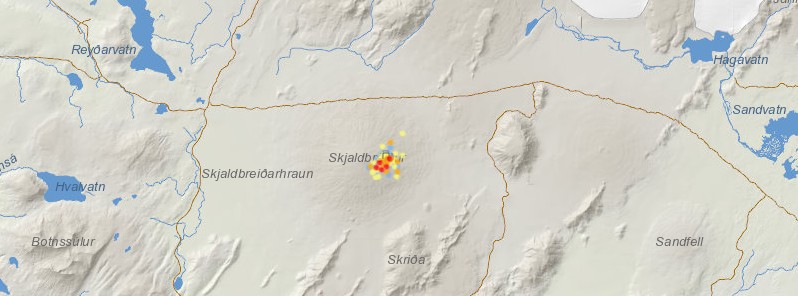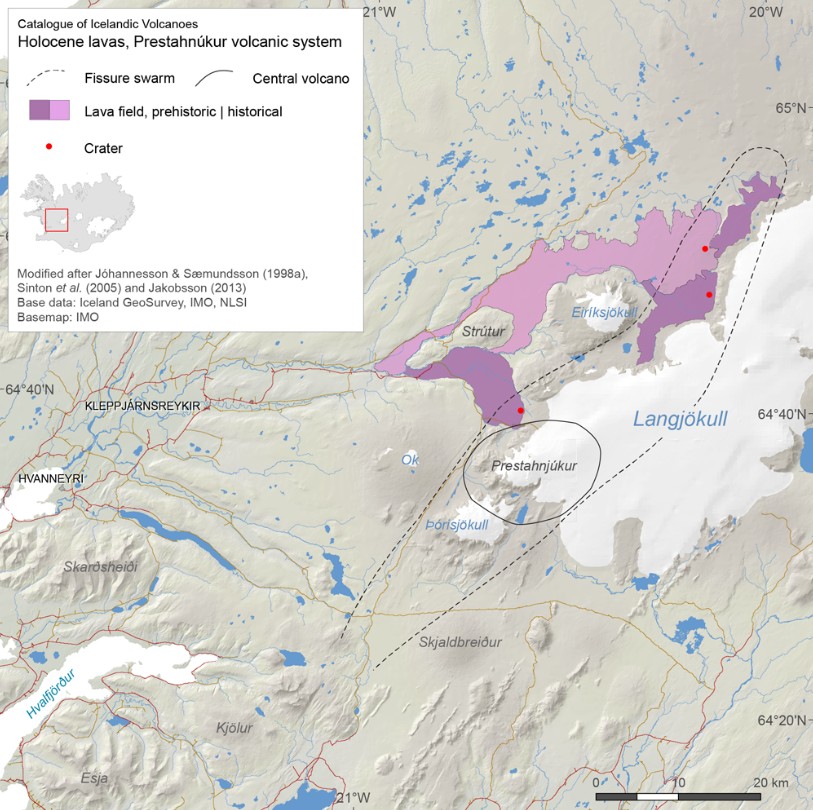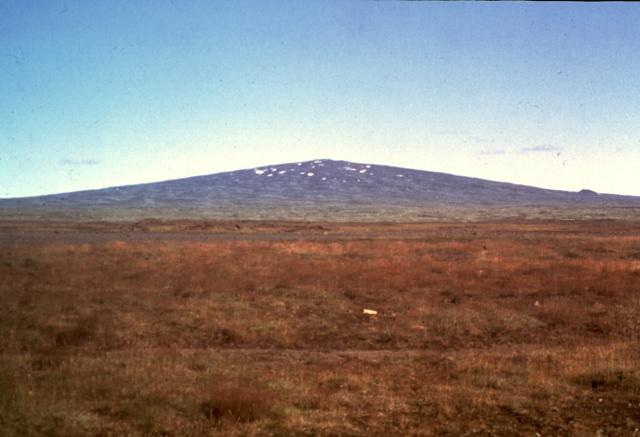Earthquake swarm under Skjaldbreidur volcano, Iceland

An intense earthquake swarm is in progress at the southern end of Prestahnúkur volcanic system (Langjökull icecap) since early Saturday, December 9, 2017. More than 100 quakes were registered within 40 hours, with 4 above M3.0. There have not been earthquakes as large as these in this area since 1992. IMO experts believe the quakes are not a sign of an imminent eruption.
The swarm is centered under Mt. Skjaldbreidur, a classic Icelandic shield volcano located between Thorsjökull glacier and Thingvallavatn lake.
Between 05:59 UTC, December 9 and 22:00 UTC, December 10, the Icelandic Met Office (IMO) registered a total of 107 earthquakes, with the strongest measuring M3.8 at a depth of 5.5 km (3.4 miles). So far, the region was struck by 4 M3+ quakes – M3.1, M3.5, M3.7 and aforementioned M3.8. All of them had depths between 5.5 and 5.8 km (3.4 and 3.6 miles).
The larger earthquakes were felt in the country's south and west, IMO said.
.png)

Image courtesy IMO
Although there have not been earthquakes as large as these in the area around Skjaldbreidur since 1992, experts at IMO believe they are not signs of an imminent eruption.
The Prestahnúkur volcanic system has been moderately active with six eruptions in Holocene time. The volcanic system, located on the west margin of the Western Volcanic Zone, is about 90 km long and 15 km wide (56 x 9 miles), consisting of a central volcano marked by rhyolite and geothermal activity and a fissure swarm defined by prominent faults. The system is partly covered by up to 300 m (984 feet) thick ice. The characteristic Holocene activity is effusive basaltic eruptions with lava volumes (DRE) ranging up to 5 km3 (1.2 mi3).
Based on six known eruptions during the last 11 000 years, the eruptive frequency of this volcano is 1 in 2 000 years, according to IMO. This estimate will be improved by dating the three eruptions whose age is unknown.

Prestahnukur volcanic system, holocene lavas. Image courtesy Catalogue of Icelandic Volcanoes
The classic Icelandic volcano Skjaldbreidur is perhaps the best known of the many small shield volcanoes that were constructed along rift zones where the Mid-Atlantic Ridge rises above sea level. Skjaldbreidur, seen from the west along route 52 in the image below, was formed about 9 500 years ago during a single long-duration eruption at the southern end of the Prestahnúkur system.

Skjaldbreidur volcano, Iceland. Credit: Richie Williams / USGS
The last known eruption at Prestahnúkur took place in 3350 BCE and was focused around Sköflungur, according to the Global Volcanism Program. The last eruption at Skjaldbreidur took place in 7550 BCE ± 500 years.
Geological summary
The massive subglacial Prestahnúkur volcano at the SW end of the Langjökull icecap has associated rift zones to the north and SW that have erupted during the Holocene. Hot springs are associated with the rhyolitic central volcano.
The classic Icelandic shield volcano Skjaldbreidur was formed at the southern end of this volcanic system, between Thorsjökull glacier and Thingvallavatn lake. The broad, low-angle shield volcano produced more than 13 km3 (3 mi3) of basaltic lava flows during the early Holocene. The smaller mid-Holocene Sköflungur lava shield lies immediately NE of Skjaldbreidur.
Featured image: Earthquake swarm under Skjaldbreidur volcano, Iceland. Credit: Catalogue of Icelandic Volcanoes, IMO

Commenting rules and guidelines
We value the thoughts and opinions of our readers and welcome healthy discussions on our website. In order to maintain a respectful and positive community, we ask that all commenters follow these rules.